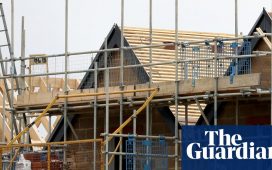Thana Prasongsin | Moment | Getty Images
Buyers want smaller homes
Smaller homes help slash building costs, but much of the trend stems from buyer demand. Homebuyers are expressing a desire for smaller homes, whether as a reaction to high prices or because they simply want a smaller space, experts say.
The typical buyer today wants a 2,067-square-foot home, according to the NAHB’s 2024 What Home Buyers Really Want study. In 2003, the desired home size was 2,260 square feet.
“Buyers are shaped by the environment when they’re in a low-inventory, low-housing-affordability environment,” said Robert Dietz, chief economist for NAHB. “They make certain compromises.”
In some cases, buyers might simply desire a compact home. In the U.S., nearly 30% of recent homebuyers are single, said Jessica Lautz, deputy chief economist at the National Association of Realtors.
“They may not need 2,000 square feet or even want that for themselves,” she said.
About 28% of polled buyers recently purchased a home between the sizes of 1,501 to 2,000 square feet; while 26%, purchased a home between 2,001 to 2,500 square feet, according to the NAR’s 2024 Home Buyers and Sellers Generational Trends Report. Another 16% bought a home that’s 1,500 square feet or smaller.
The survey received 6,817 responses from homebuyers aged 18 and up who had purchased a home between July 2022 and July 2023.
How zoning influences home sizes
About 38% of builders say they built smaller homes in 2023, and 26% said they plan to build even smaller homes this year, according to NAHB.
While buyer demand is driving the trend, an area’s zoning rules may also play a role.
Some jurisdictions have “exclusionary zoning practices,” which may require builders to make homes of a minimum lot size, said Dietz.
“If you’re building a home in a certain neighborhood and that home has to sit on a half acre lot, or a lot close to a full acre, you’re not going to be building a small home on that lot,” said Dietz.

The growth in such zoning rules and regulatory costs made it difficult for builders to make new, smaller homes in the years after the Great Recession, he said.
Now, builders can make smaller homes in the form of townhouses as some areas relax their zoning rules, said Dietz.
In the first quarter of 2024, about 42,000 townhouses, or single-family attached homes, began construction, according to U.S. Census data. The new figure is 45% higher than in the first quarter of 2023, NAHB found.
“I don’t think it’s limited to one region, one type of geography,” said Dietz. “I think it’s really in places where jurisdictions are permitting zoning for that kind of medium-density environment.”
‘A shrinking of the space in the required rooms’
If you’re a buyer on the market considering a home around the median size, or roughly 2,000 square feet, “what you’re really talking about going from a medium-sized home to a smaller home is a shrinking of the space in the required rooms,” Dietz said.
You could consider using your spaces for multiple purposes, experts say.
“We don’t have a dedicated office,” said Dietz, who lives in a two-bedroom townhouse with his wife, a college professor, and their children. “Our dining room/kitchen doubles as basically my wife’s office.”
Space-saving storage around the house is key for a smaller property, he said.
“Literally every part of our home that has got a space that can be turned into storage, we’ve converted that,” Dietz said.
During the pandemic, many homeowners looked at their homes in new ways, Lautz said.
“Some asked, ‘Do I actually need an extra bedroom or could I use that as a home office or gym?'” she said.
A smaller property can also result in lower energy and maintenance costs, she said.
But if you’re a buyer who desires traditional home spaces like dining rooms, you can still find an existing home on the market with such features, Lautz said.
“There’s always going to be that ebb and flow within properties and how that space is being used,” she said.










